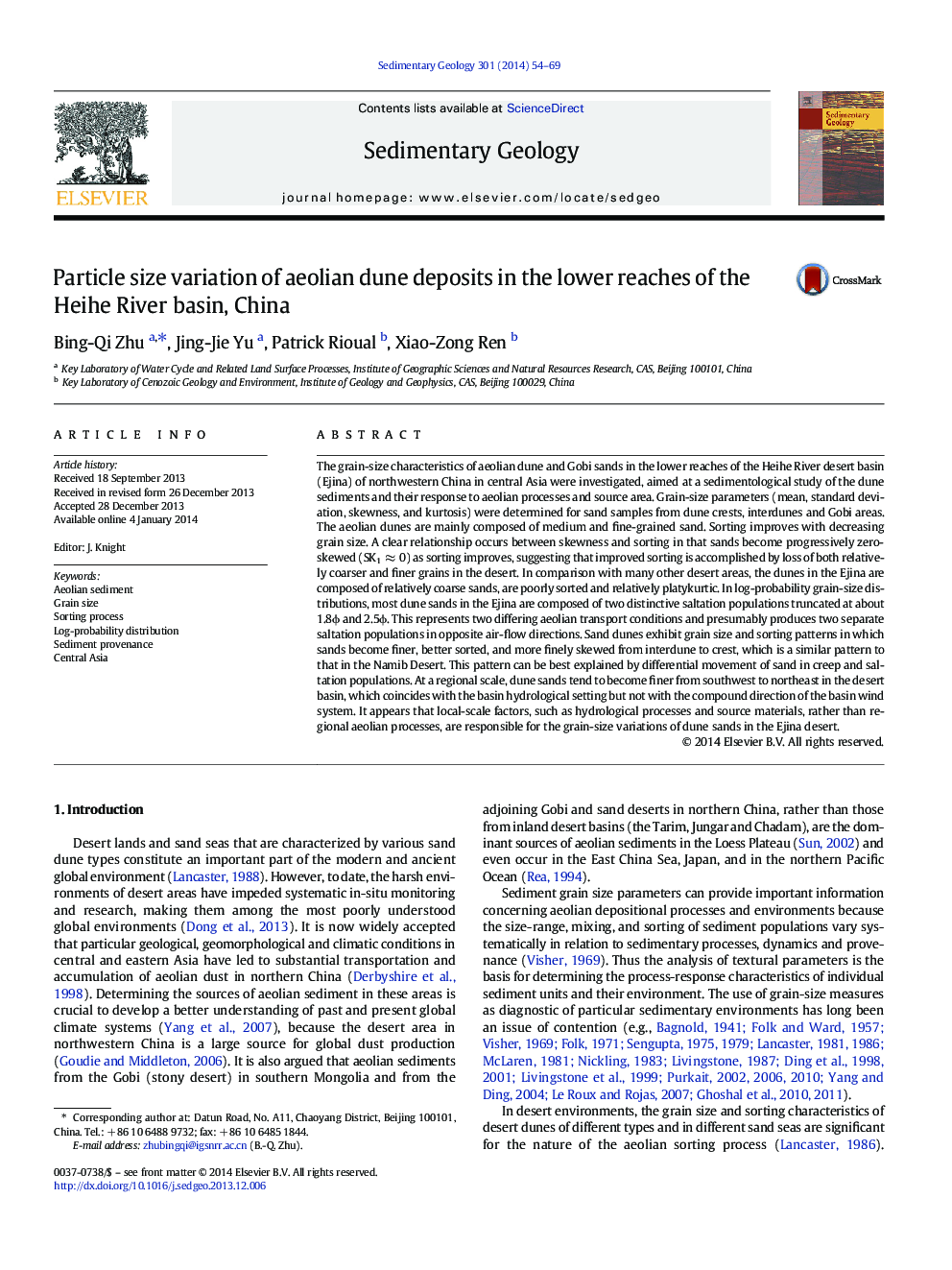| کد مقاله | کد نشریه | سال انتشار | مقاله انگلیسی | نسخه تمام متن |
|---|---|---|---|---|
| 4689421 | 1636062 | 2014 | 16 صفحه PDF | دانلود رایگان |

• Mz tends to decrease and sands become progressively zero-skewed as sorting improves.
• Dune sands are composed of two distinctive saltation subpopulations.
• Dune sands tend to be finer not coinciding with the basin wind system.
• Local factors are likely responsible for the grain-size variations of dune sands.
The grain-size characteristics of aeolian dune and Gobi sands in the lower reaches of the Heihe River desert basin (Ejina) of northwestern China in central Asia were investigated, aimed at a sedimentological study of the dune sediments and their response to aeolian processes and source area. Grain-size parameters (mean, standard deviation, skewness, and kurtosis) were determined for sand samples from dune crests, interdunes and Gobi areas. The aeolian dunes are mainly composed of medium and fine-grained sand. Sorting improves with decreasing grain size. A clear relationship occurs between skewness and sorting in that sands become progressively zero-skewed (SK1 ≈ 0) as sorting improves, suggesting that improved sorting is accomplished by loss of both relatively coarser and finer grains in the desert. In comparison with many other desert areas, the dunes in the Ejina are composed of relatively coarse sands, are poorly sorted and relatively platykurtic. In log-probability grain-size distributions, most dune sands in the Ejina are composed of two distinctive saltation populations truncated at about 1.8ϕ and 2.5ϕ. This represents two differing aeolian transport conditions and presumably produces two separate saltation populations in opposite air-flow directions. Sand dunes exhibit grain size and sorting patterns in which sands become finer, better sorted, and more finely skewed from interdune to crest, which is a similar pattern to that in the Namib Desert. This pattern can be best explained by differential movement of sand in creep and saltation populations. At a regional scale, dune sands tend to become finer from southwest to northeast in the desert basin, which coincides with the basin hydrological setting but not with the compound direction of the basin wind system. It appears that local-scale factors, such as hydrological processes and source materials, rather than regional aeolian processes, are responsible for the grain-size variations of dune sands in the Ejina desert.
Journal: Sedimentary Geology - Volume 301, 15 March 2014, Pages 54–69